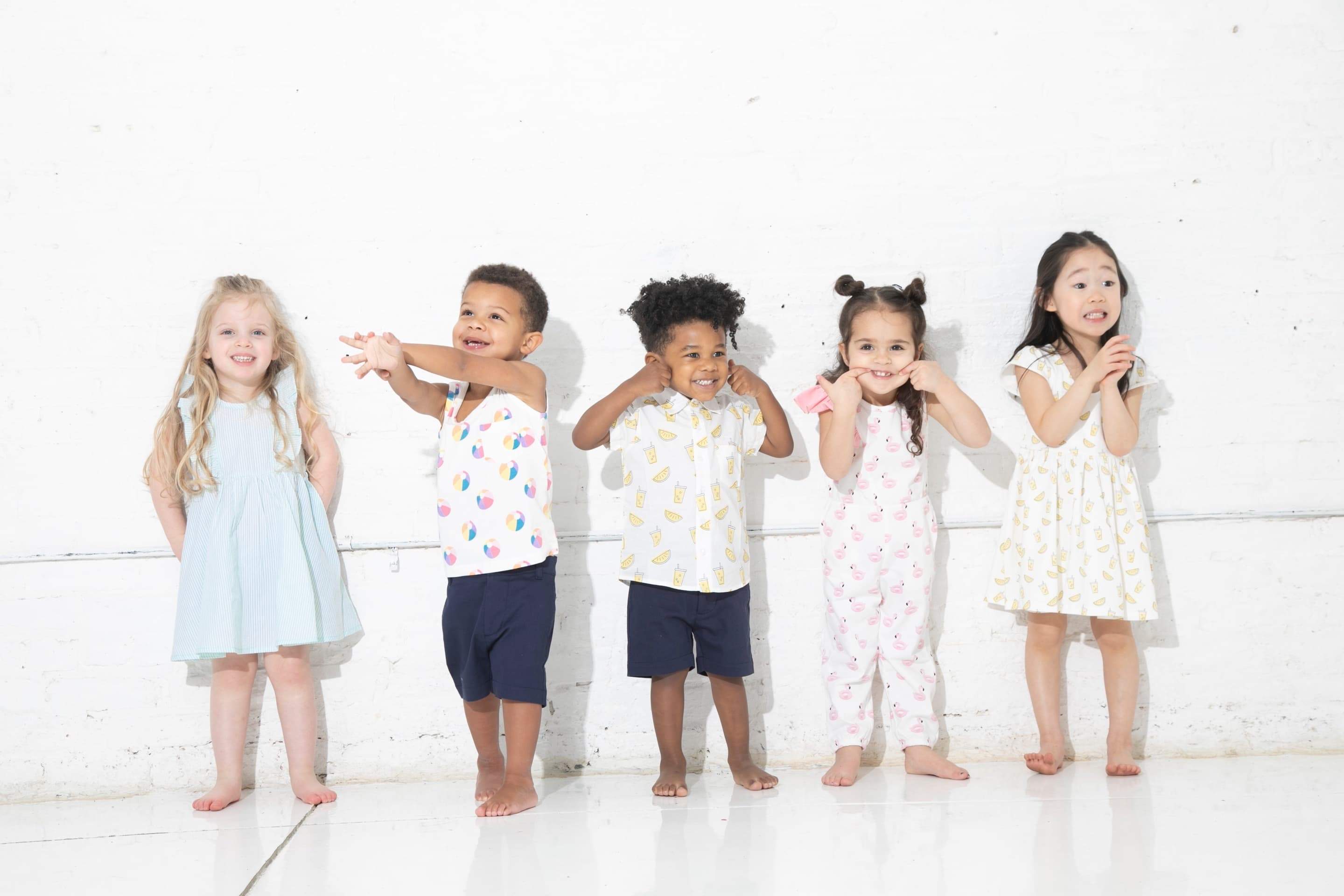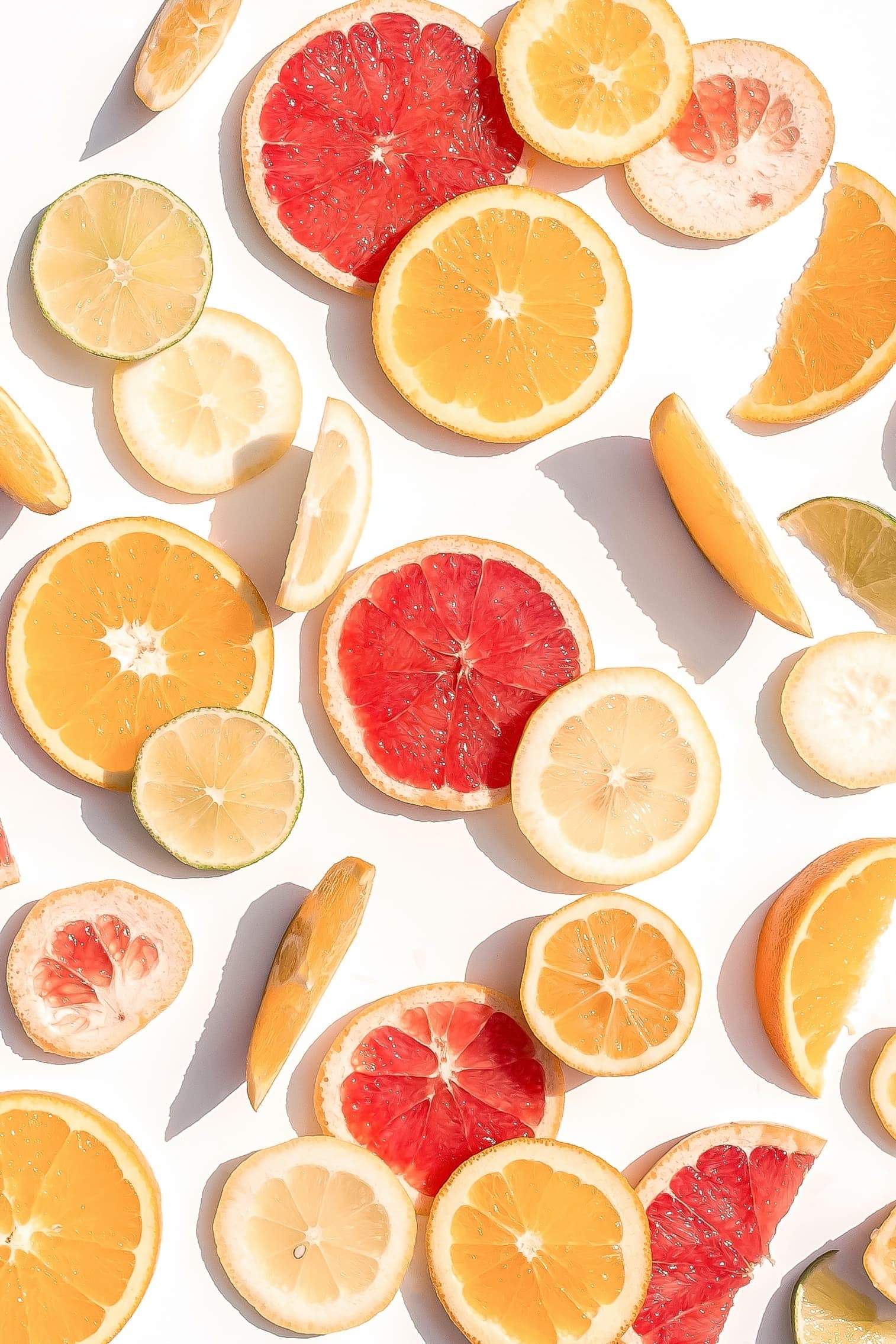The Best Ways to Play With Your Baby, According to a Childhood Development Expert

Playing with a newborn is pretty simple—funny faces, high-contrast colors and music is enough to keep your little stimulated during those short breaks between naps and feeding. But once your baby reaches three months, she’s ready for a little more action—toys to swipe and grab, textures to feel, and even more silliness and conversing from mom. (If you're dealing with new mom information overload, here's some good news: play is easy.) “A lot of times moms think they have to be the initiator or educator, but babies are built to play—all we really have to do is follow them, be present, and react to what they’re interested in,” says early childhood development expert Julie Wright, MFT. Check out Wright’s tips below to make the most of your exploration time together.
Follow Baby’s Lead
“You really don’t need specific toys or activities to advance your baby—research on play shows that the most learning takes place when there’s a felt emotional interaction,” says Wright. In other words, by sharing in baby’s pleasure (whether that’s by smiling and watching as she bangs a spoon on a bowl or stares into a mirror) you’re helping your little learn. “You can look at the toy right along with them, pick up a similar toy, or narrate what they’re doing,” says Wright.
Eliminate Clutter
It can be tempting to haul all of baby’s favorite toys out at once (something will stick, right?!) but the stimulation overload can make it hard for babies to focus. “Clear the play space so there are only a few toys out at a time, otherwise babies tend to flit from one thing to the next without ever really landing on something,” says Wright. Another idea: stash a group of toys away for a few months so you can bring them out later on as ‘new.’
Pick Toys Where Baby Dictates the Play
“The best toys are things that your baby can hold and manipulate, so that the child dictates the play, not the toy,” says Wright. (Translation: if that flashing, blinking, noisy toy doesn’t require baby to do anything to it, it’s probably not worth his time (or your headache). Pick objects that baby can push, pull, and turn when they're ready.
Don’t Forget to ‘Converse’
Most moms know that chatting with baby—whether you’re hanging out in tummy time or tickling their toes—is one of the best ways to boost language development. But as you’re playing and gabbing away, don’t forget to give your baby a chance to coo and gurgle back. “We know that it’s not so much the volume of language we send their way, but the responses we make to their sounds, that’s going to help increase their vocabulary,” says Wright. (For example, if you ask baby “Do you like the sound that toy makes?” be sure to give her a chance to answer. When she does, you can respond back and keep the 'conversation' going.)
Do it Again (and Again!)
Babies don’t get sick of repetition the way adults might—if you discover a silly face that makes your little laugh hysterically, you’ve got the green light to do it 25 times—and then some. “Repetition is such an important part of building their focus and attention. Stay in the game if baby is responding—they’ll let you know when they’re done,” says Wright. (Babies will turn their head or even arch their back when they’re tired or emotionally tapped out.)
Play at Baby’s Pace
Babies all have different temperaments and hit their milestones at different times, which means the games one five-month-old loves may not suit another five-month-old. “The best thing you can do is follow their cues to see what they enjoy and can do,” says Wright. “Some babies like big movements and loud noise, while others are more sensitive and want to play quiet and slow.” The best move: take the suggestions below and adapt them to fit your little.
Ideas for Play:
-Dangle toys over baby’s head and move them up and down or side to side while making funny noises.
-Blow bubbles (raspberries) on baby’s belly, or purchase the real kind of bubbles so baby can track them around the room.
-Play peek-a-boo. (Step out of baby’s sight line or hide behind a scarf and pop back in with a big smile.) “This is a great game for helping babies with separation anxiety—they learn about object permanence and realize you’re coming back,” says Wright.
-Let baby touch all different types of textures and fabrics—the little strings on your couch pillows, the tiny knots in a rug, a silky scarf, etc. “Babies love sensory exploration and there’s so much you can use around the house,” says Wright.
-Sing songs while clapping and making hand motions.
-Read colorful board books
-Practice tummy time next to a mirror.
-Shake rattles that make all different sounds (you can put rice, beans, or hard pasta shells in bottles and twist the top on to create a ‘new’ rattle on the fly).
-Bring out the pots and pans. (If baby is sitting up, he’ll love to bang a wooden spoon on a bowl.)
-Hide toys out of sight (like under a blanket or a bowl) and let baby look for them.
-Dance with baby in your arms. (Yep, this counts as your workout.)













